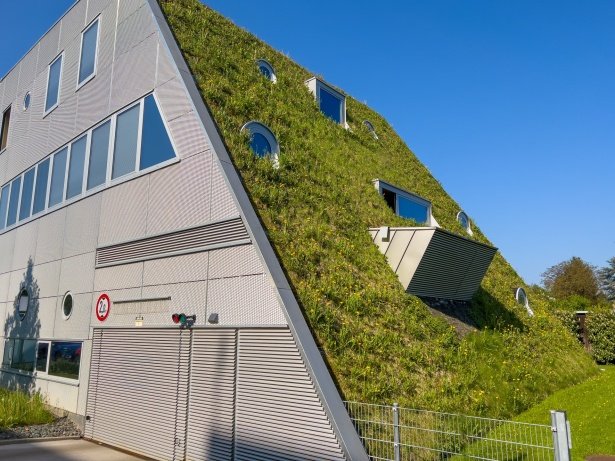12 Best Green Resolutions for Every Month in 2025: A Guide to Sustainable Living
The start of a new year always feels like a chance to turn the page, doesn’t it? A time to reflect, reset, and refocus on what truly matters. But as we think about ways to better ourselves, shouldn’t we also consider how our actions impact the world around us? With issues like air pollution, deforestation, and climate change becoming impossible to ignore, it’s clear that living sustainably is more than just a choice—it’s a necessity.
The good news? Small, consistent changes can lead to big impacts. What if we dedicated each month of 2025 to a simple, actionable habit that benefits both you and the planet? Imagine starting January by adding a little green to your life with a houseplant or choosing to walk or bike instead of driving in February. These aren’t just resolutions; they’re steps toward a healthier lifestyle and a healthier Earth.
This guide is here to help you make those changes, one month at a time. Packed with expert advice, real-world statistics, and personal stories, it’s designed to inspire and empower you. Let’s embrace this fresh start together—for ourselves, for each other, and for the planet we call home.
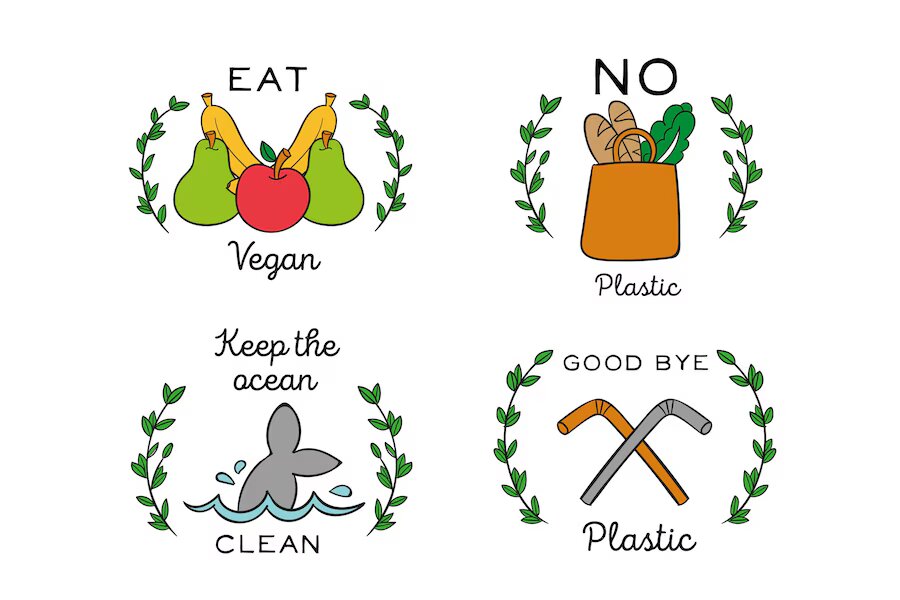
In This Article
- Green Resolution for Every Month
- #1. January: Own a Plant
- #2. February: Walk or Use a Bike
- #3. March: Prevent Food Waste
- #4. April: Reduce Single-use Plastics
- #5. May: Eat Less Meat and Dairy Products
- #6. June: Adopt Sustainable Practices
- #7. July: Start Recycling
- #8. August: Avoid Fast Fashion
- #9. September: Volunteer for the Environment
- #10. October: Adopt Conscious Consumption of Energy
- #11. November: Adopt Seasonally Local Food
- #12. December: Avoid Air Travel
Green Resolution for Every Month
#1. January: Own a Plant
Starting the year with something as simple as bringing a plant into your life can feel surprisingly powerful. Imagine walking into your home after a long day and being greeted by a fresh burst of greenery. Plants don’t just sit there looking pretty—they actively improve the air you breathe, calm your nerves, and brighten your day. Studies even back this up: according to the Journal of Preventive Medicine Report, gardening can boost your self-esteem and overall mental well-being. It’s like giving your home (and yourself) a fresh start.
How to Begin Your Plant Journey
No green thumb? No problem. Start small with low-maintenance plants like succulents, spider plants, or herbs like basil and mint. These plants thrive even if you’re a total newbie to gardening. Think of them as the gateway to a greener, healthier lifestyle. Plus, there are countless online tutorials and gardening communities to guide you every step of the way. Don’t worry if you make a mistake—learning to care for plants is part of the joy.
The Environmental Impact of Growing Plants
Caring for plants at home isn’t just about personal benefits. It’s a small yet meaningful step towards sustainability. Did you know that maintaining even a tiny garden can absorb CO2 and help combat climate change? The Royal Horticultural Society points out that every little bit helps. Plus, growing your herbs or vegetables means you’re less reliant on commercial agriculture, which is a significant source of greenhouse gas emissions. And if you’ve ever tossed spoiled produce from the fridge, you’ll appreciate how growing your own can cut down on food waste, saving both money and resources.
As the Royal Horticultural Society wisely puts it, “Nurturing a plant nurtures life. Small gardens make a big difference in reducing your carbon footprint.” So why not let January be the month you welcome a bit of nature into your home?

#2. February: Walk or Use a Bike
We’ve all heard it: driving is one of the biggest contributors to carbon emissions. What if you could fight climate change and improve your health at the same time? By swapping short car trips for walking or biking, you’re not just saving the planet—you’re also doing your heart a favour. Research from The Lancet suggests that this shift could prevent over 100,000 premature deaths each year. That’s an astonishing number when you think about it.
Making the Change
Start small. Walk to the grocery store or cycle to work if it’s nearby. For longer distances, consider investing in an electric bike—a game-changer for those who need a little extra help on hills or for longer commutes. It’s about making sustainable choices that fit your lifestyle.
The Big Picture
The transportation sector contributes 14% of global greenhouse gas emissions. Imagine the impact if more people walked or biked instead of driving. Experts estimate that global adoption of non-motorised transport could cut emissions by 1.5 gigatons annually. That’s a huge dent in the fight against climate change.
Dr. Carlos Perez from the University of East Anglia sums it up perfectly: “Switching to non-motorised transport is a win-win: it’s good for the environment and your health.”

#3. March: Prevent Food Waste
Food waste is a bigger problem than most people realise. Picture this: one-third of all food produced globally ends up wasted. That’s not just a waste of food—it’s a waste of the water, energy, and resources that went into producing it. And when food rots in landfills, it releases methane, a greenhouse gas far more potent than CO2.
Steps to Waste Less Food
The solution starts at home. Plan your meals so you buy only what you need. Store food properly to extend its shelf life—for example, keep herbs in a glass of water like flowers, and store fruits and vegetables separately to prevent them from ripening too quickly. Got leftovers? Instead of tossing them, try composting. Not only does this reduce waste, but it also enriches the soil for gardening.
The Ripple Effect
Small changes can make a big difference. Harvard University estimates that reducing food waste by just 15% could feed 25 million Americans annually. And composting? It significantly lowers methane emissions. When you prevent food waste, you’re not just helping the planet—you’re also saving money and resources.
Dr. Christian Reynolds from the Centre for Food Policy puts it simply: “Reducing food waste is one of the easiest ways to combat climate change.”
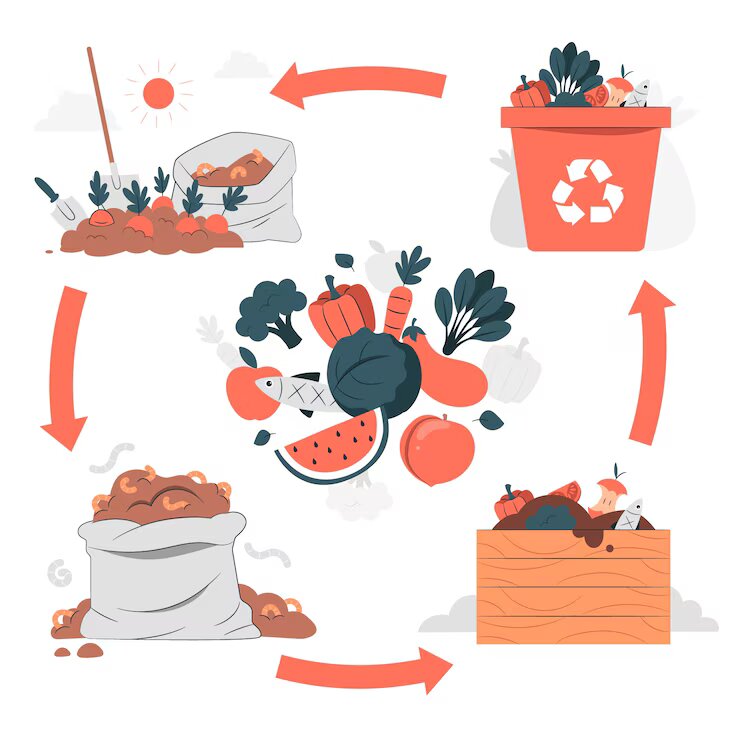
Learn More: AI and Sustainability: Transforming the Future of Green Living
#4. April: Reduce Single-use Plastics
Single-use plastics are everywhere, from grocery bags to water bottles. While convenient, they’re wreaking havoc on our planet. Without action, the volume of plastic entering our oceans could triple by 2040, according to the Pew Charitable Trusts.
Easy Swaps to Cut Down on Plastics
Start by replacing single-use items with reusable alternatives. Bring your own tote bags to the store, invest in a reusable water bottle, and choose glass or stainless steel containers over plastic ones. Support brands that use sustainable packaging, and don’t shy away from voicing your preferences as a consumer.
The Impact of Change
Reducing plastic waste can decrease marine pollution by 80%, according to UNESCO. Beyond the environmental benefits, tackling plastic pollution could save over $2 trillion annually in costs to tourism, fisheries, and other industries affected by this crisis.
Dr. Sarah-Jeanne Royer emphasises, “Single-use plastics harm marine life and contribute significantly to greenhouse gas emissions. Reducing their use is vital for our oceans.”
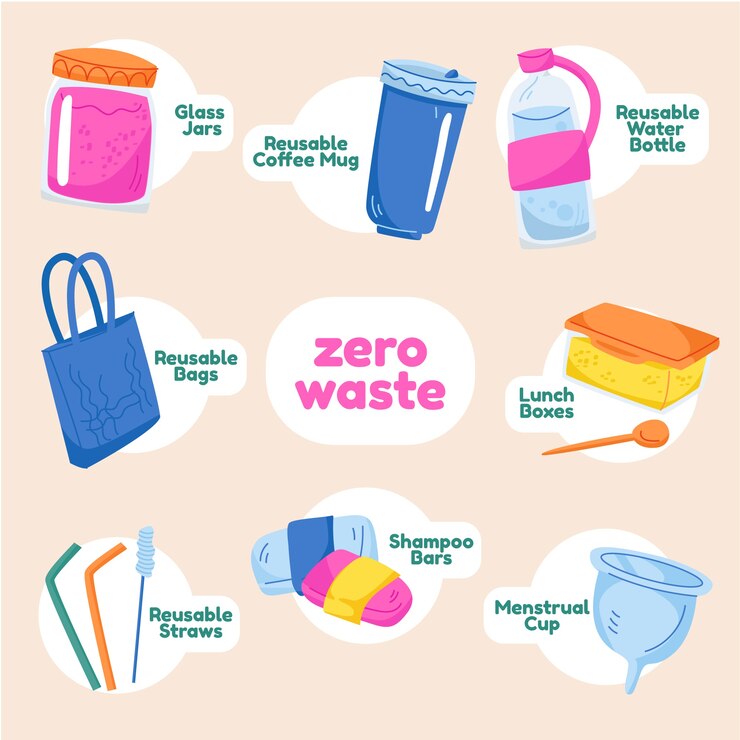
#5. May: Eat Less Meat and Dairy Products
Have you ever considered how your diet impacts the environment? Livestock farming is responsible for about 15% of global greenhouse gas emissions. That’s more than all transportation combined. By cutting back on meat and dairy, you can reduce your environmental footprint significantly.
Simple Ways to Start
You don’t have to go vegan overnight. Start with small steps, like observing “Meatless Mondays” or swapping meat for plant-based proteins like lentils, chickpeas, or tofu. Over time, these small changes can add up to a big impact.
The Environmental and Health Benefits
A plant-based diet isn’t just good for the planet—it’s also better for your health. Research published in PLOS Climate suggests that transitioning to plant-based eating could reduce global agricultural emissions by 25 gigatons of CO2 annually. Plus, it conserves water, as livestock farming requires enormous amounts of it.
Dr. Patrick O. Brown, founder of Impossible Foods, says it best: “Transitioning to a plant-based diet is a powerful way to reduce your environmental impact.”

#6. June: Adopt Sustainable Practices
Sustainability might feel like a buzzword, but it’s about making choices that protect our planet for future generations. It’s not about being perfect—it’s about progress. Each small step adds up.
Simple Sustainable Habits
Conserve energy by turning off lights when you leave a room. Save water by fixing leaks and opting for shorter showers. Choose reusable items over disposable ones, like cloth napkins and rechargeable batteries. These changes might seem small, but their cumulative impact is enormous.
The Bigger Picture
According to the Global Footprint Network, sustainable living could reduce the demand for Earth’s resources by 70%. That means less strain on our planet and a brighter future for everyone.
“Sustainability is about progress, not perfection. Every small step counts,” says Ida Bohman Steenberg, a sustainability officer. By adopting sustainable practices, you’re contributing to a healthier planet and a more thoughtful way of life.
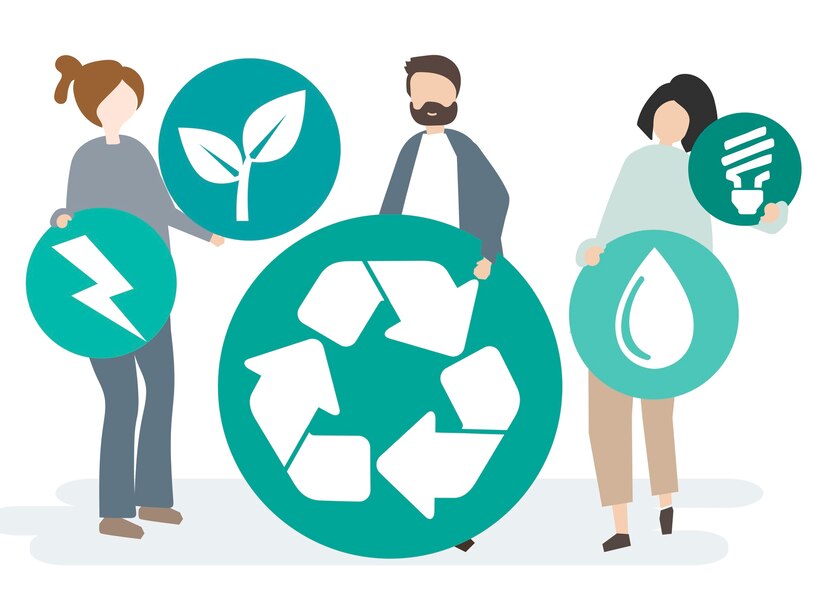
#7. July: Start Recycling
Recycling is one of the simplest yet most impactful steps toward a sustainable future. It reduces waste, conserves finite natural resources, and prevents pollution. Despite its importance, the statistics around recycling are alarming. According to the MIT Technology Review, only 9% of all plastics ever produced have been recycled. This means a staggering amount of waste ends up in landfills, polluting our environment and threatening ecosystems.
When waste is not recycled, it often finds its way into the ocean, where it breaks down into microplastics that harm marine life and eventually enter the food chain. Beyond the environmental consequences, improper waste management also strains limited landfill space and increases greenhouse gas emissions as organic materials decompose without proper aeration.
How to Start
Starting a recycling journey doesn’t have to be overwhelming. Here’s how you can make a difference in your daily life:
- Set Up a Home Recycling System: Start by identifying common recyclables in your household, such as paper, glass, aluminium, and certain plastics. Label separate bins clearly to make sorting easy for everyone at home.
- Research Local Recycling Guidelines: Every city or town has specific rules about what can and cannot be recycled. Look up your municipality’s guidelines to ensure you’re sorting waste correctly.
- Repurpose and Reuse: Before throwing items into the recycling bin, consider whether they can be repurposed. Glass jars, for example, can be used as storage containers, while old newspapers can be shredded for compost.
- Participate in Community Recycling Programs: Some items, such as electronics and hazardous materials, require special handling. Find local drop-off locations for these items to ensure they’re disposed of safely.
Data and Impact
The environmental benefits of recycling are immense. Recycling one ton of paper saves:
- 17 trees
- 7,000 gallons of water
- 380 gallons of oil
Moreover, effective recycling practices can keep millions of tons of waste out of landfills annually. This not only reduces the need for resource extraction but also prevents the release of harmful greenhouse gases like methane.
Expert Insight: Environmental activist Bill McKibben emphasises, “Recycling is about more than waste management; it’s about resource conservation. Every recycled item is one less resource extracted from the earth.”
By making recycling a habit, we take a crucial step toward protecting our planet for future generations.

Learn More: Why Is Green Living Important? Benefits Your Life and the Planet
#8. August: Avoid Fast Fashion
The fashion industry is a significant contributor to environmental degradation, accounting for 10% of global carbon emissions. Fast fashion—cheap, mass-produced clothing—is particularly problematic. It relies on energy-intensive production processes, excessive water usage, and toxic dyes that pollute waterways. To make matters worse, most fast fashion items are designed to be disposable, resulting in vast amounts of textile waste.
Beyond environmental concerns, fast fashion often exploits workers in developing countries, paying them low wages and subjecting them to unsafe working conditions.
How to Start
- Buy Second-Hand Clothing: Thrift stores and online platforms make it easy to find stylish, pre-loved clothing at a fraction of the cost of new items.
- Support Sustainable Brands: Look for companies that prioritise ethical practices, such as using organic materials, reducing waste, and ensuring fair wages for workers.
- Host a Clothing Swap: Gather friends and family for a swap event where everyone can trade gently used items. This is a fun and cost-effective way to refresh your wardrobe without contributing to overproduction.
- Extend the Life of Your Clothes: Take good care of your garments by washing them at lower temperatures, mending tears, and avoiding trends that quickly go out of style.
Data and Impact
According to the Ellen MacArthur Foundation, extending the life of clothing by just nine months can reduce its carbon, water, and waste footprint by 20-30%. Additionally, the fashion industry’s shift toward sustainable practices could significantly reduce its environmental impact.
Expert Quote: Stella McCartney, a renowned fashion advocate, puts it succinctly: “Sustainable fashion means voting with your wallet for a better future. Every purchase is a decision about the kind of world you want to live in.”
By making thoughtful choices about what we wear, we can reduce waste, conserve resources, and support ethical labor practices.

#9. September: Volunteer for the Environment
Volunteering for environmental organisations allows you to make a tangible impact in your community. Whether it’s planting trees, cleaning up beaches, or educating others about sustainability, your efforts can help address critical environmental challenges. Volunteers are often the backbone of conservation projects, providing the manpower needed to restore ecosystems and protect wildlife.
Beyond the direct benefits, volunteering inspires others to take action. When people see your dedication, they’re more likely to join the cause, creating a ripple effect of positive change.
How to Start
- Find Local Initiatives: Research organisations in your area that focus on issues you’re passionate about, such as reforestation, wildlife conservation, or pollution prevention.
- Get Involved Online: If in-person volunteering isn’t feasible, look for virtual opportunities like writing for environmental blogs, creating awareness campaigns on social media, or fundraising.
- Educate Others: Share your knowledge about sustainability with friends, family, and colleagues. Hosting workshops or leading community discussions can amplify your impact.
Data and Impact
Volunteer-driven conservation efforts have proven to significantly improve biodiversity restoration. For example, tree-planting initiatives not only sequester carbon but also provide habitats for countless species.
Inspiration: Greta Thunberg, the young climate activist, says, “Activism inspires change and encourages others to take action. Your voice and your actions can make a difference.”
By dedicating even a few hours a month to volunteering, you can contribute to meaningful change and help build a more sustainable world.
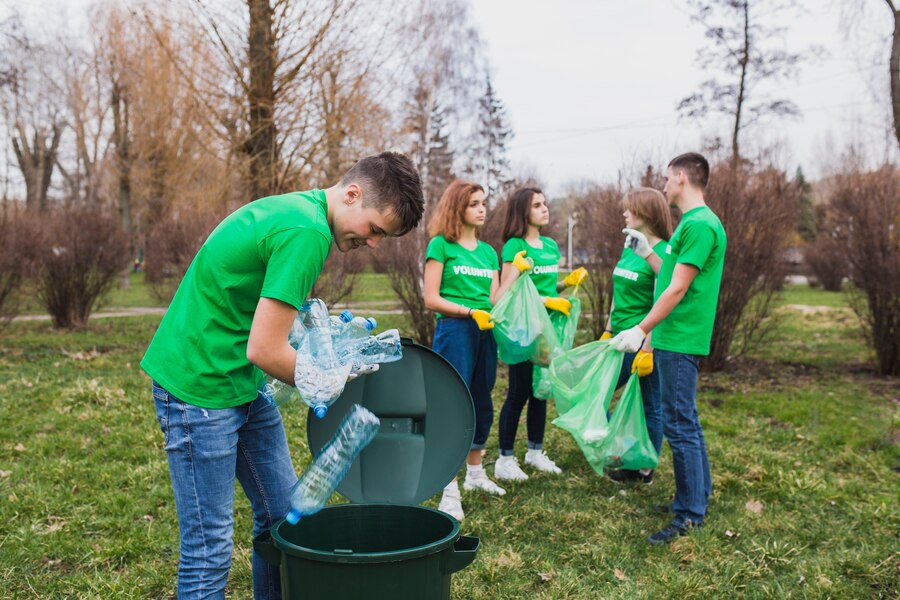
#10. October: Adopt Conscious Consumption of Energy
Energy efficiency is a cornerstone of sustainable living. The energy we consume in our homes and businesses accounts for a significant portion of global carbon emissions. Simple actions like turning off unused lights or unplugging electronics can collectively make a big difference.
The environmental benefits of conserving energy extend beyond reducing emissions. It also decreases the demand for resource-intensive energy production, preserving natural habitats from the impacts of mining and drilling.
How to Start
- Switch to Energy-Efficient Appliances: Look for appliances with the ENERGY STAR label, which signifies superior energy efficiency.
- Install Solar Panels: If feasible, consider investing in solar panels to generate clean, renewable energy for your home.
- Adopt Everyday Habits: Turn off lights when leaving a room, unplug devices when not in use, and use natural light whenever possible.
Data and Impact
According to the U.S. Department of Energy, adopting energy-efficient practices and technologies could reduce national energy consumption by up to 20%. On an individual level, these practices can significantly lower utility bills while reducing your carbon footprint.
Expert Insight: Dr. Michael Brown, an energy expert, states, “Every kilowatt-hour saved is a step toward a sustainable future. Small changes in daily habits can lead to substantial energy savings over time.”
Energy conservation is an accessible and impactful way to contribute to a greener future while saving money.

Learn More: 20 Best Eco-Friendly Activities to Help Your Environment
#11. November: Adopt Seasonally Local Food
Eating seasonally and locally is not just healthier but also more sustainable. Locally grown foods require less transportation, which means fewer greenhouse gas emissions. Seasonal eating, on the other hand, ensures that you’re consuming produce at its peak freshness and nutritional value.
Supporting local farmers also boosts the local economy and helps preserve agricultural land.
How to Start
- Visit Farmers’ Markets: These markets are excellent places to find fresh, seasonal produce while supporting local growers.
- Join a CSA Program: Community Supported Agriculture programs provide regular deliveries of fresh, locally grown food.
- Learn What’s in Season: Familiarise yourself with seasonal produce charts to plan meals around what’s available.
Data and Impact
Research from Cambridge University shows that eating locally and seasonally can significantly reduce food-related emissions. Additionally, it fosters a deeper connection to the food you eat and the people who grow it.
Expert Quote: Hannah Ritchie, a researcher at Our World in Data, explains, “Eating seasonally supports both your health and local farmers. It’s a simple yet powerful way to contribute to sustainability.” Making mindful food choices benefits not only the planet but also your well-being.
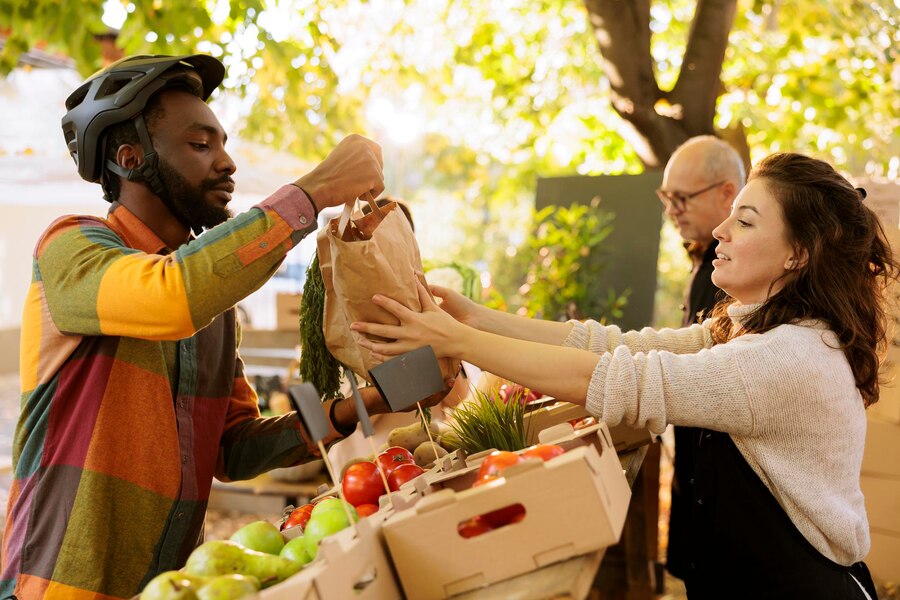
#12. December: Avoid Air Travel
Air travel is one of the most carbon-intensive activities an individual can engage in. Although it accounts for only about 2.5% of global CO2 emissions, the sector’s rapid growth and the lack of scalable green alternatives make it a pressing environmental issue. A single round-trip flight from New York to London, for instance, emits approximately 1.6 tons of CO2 per passenger, nearly the equivalent of the annual emissions of an average citizen in some developing countries.
Beyond carbon dioxide, aeroplanes release other harmful pollutants like nitrogen oxides, which contribute to ozone formation at high altitudes, amplifying their warming impact. The contrails and cirrus clouds created by flights also trap heat in the atmosphere, further exacerbating global warming.
Reducing air travel, even partially, can significantly decrease your carbon footprint and help slow the pace of climate change.
How to Start
- Choose Alternative Modes of Transportation: For shorter distances, consider trains, buses, or carpooling. These options often emit far less CO2 per passenger than flying.
- Plan “Staycations”: Rediscover local attractions and experiences instead of travelling far. This not only reduces emissions but also supports your local economy.
- Opt for Virtual Meetings: If you frequently travel for work, advocate for virtual meetings instead. Advances in video conferencing technology make it easier than ever to connect without leaving home.
- Fly Less, But Fly Better: When air travel is unavoidable, choose direct flights to minimise emissions from takeoffs and landings, which are the most energy-intensive phases of a flight. Additionally, consider airlines that invest in more fuel-efficient aircraft or carbon offset programs.
- Offset Your Emissions: While not a perfect solution, carbon offset programs allow you to invest in projects like reforestation, renewable energy, or community-based conservation to balance out the emissions from your flights.
Data and Impact
The environmental benefits of reducing air travel are profound. According to the International Council on Clean Transportation (ICCT), avoiding just one long-haul flight per year can cut your carbon footprint by up to 2 tons. On a global scale, shifting even a small percentage of travellers to alternative modes of transportation could significantly slow aviation’s contribution to climate change.
In Europe, where high-speed rail networks are well-established, trains are increasingly seen as a viable alternative to short-haul flights. For example, travelling by train from Paris to Amsterdam produces 90% fewer emissions than flying the same route.
“Reducing air travel is one of the most impactful choices an individual can make for the environment,” says Dr. Jane Smith, a climate scientist. “While systemic changes are needed to address aviation’s carbon footprint, personal decisions play a crucial role in signalling demand for sustainable alternatives.”

Conclusion
New Year’s resolutions are for positive change—to improve on what we did in the previous year. Assigning each month of 2025 to an eco-friendly practice can lead to a significant change. The New Year presents an opportunity to rewrite the wrong habits of the previous year and make a meaningful impact with sustainable practices for a greener future.

